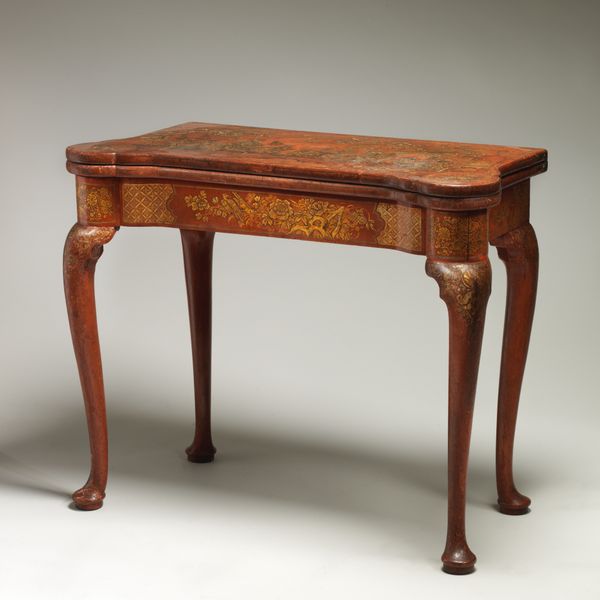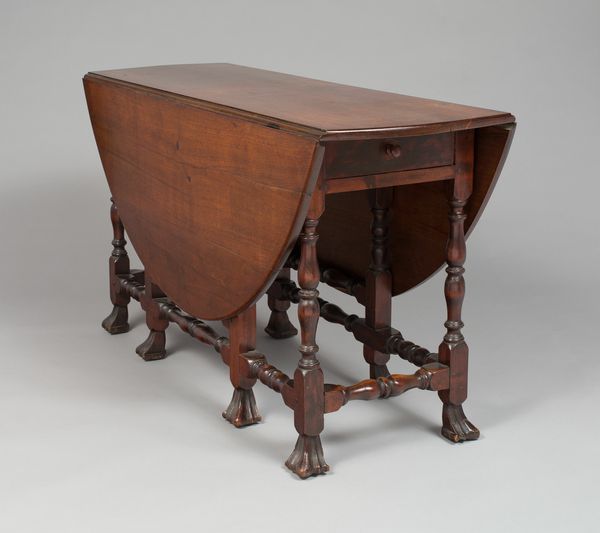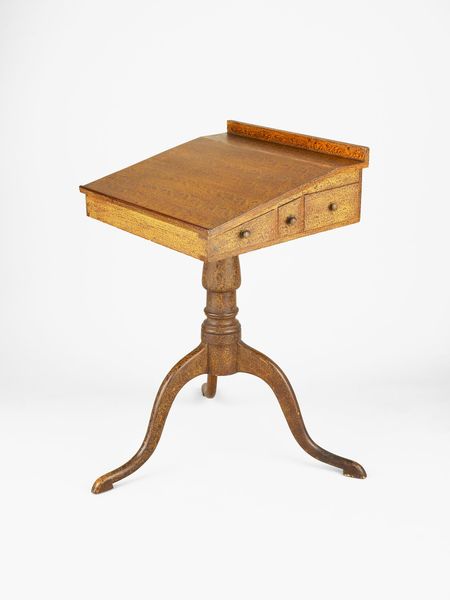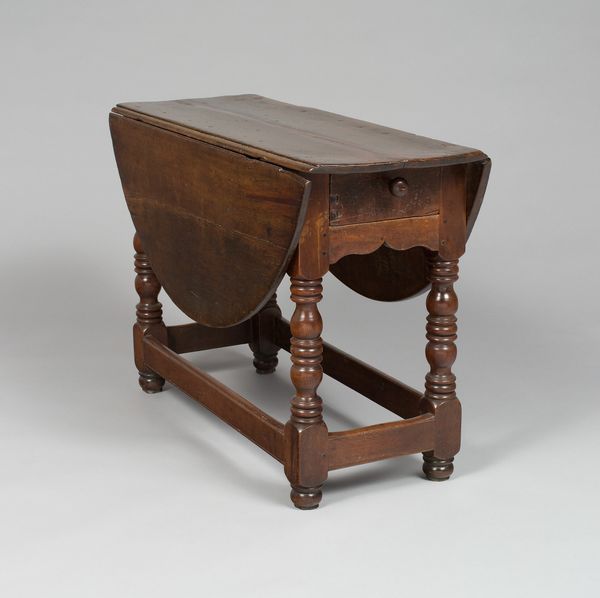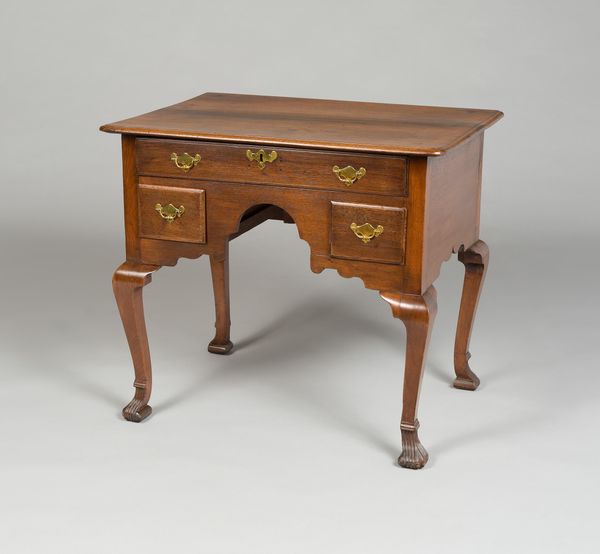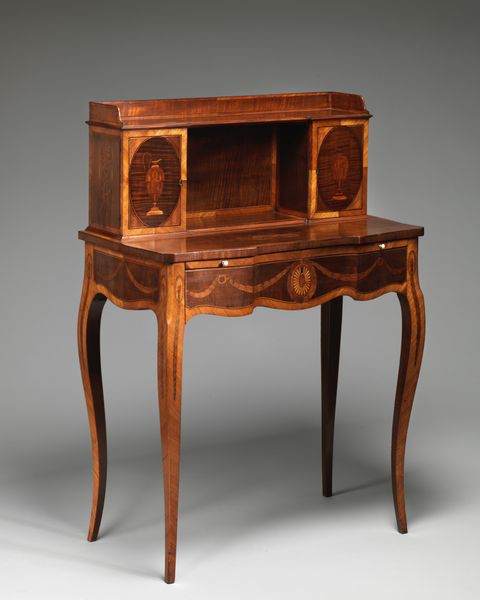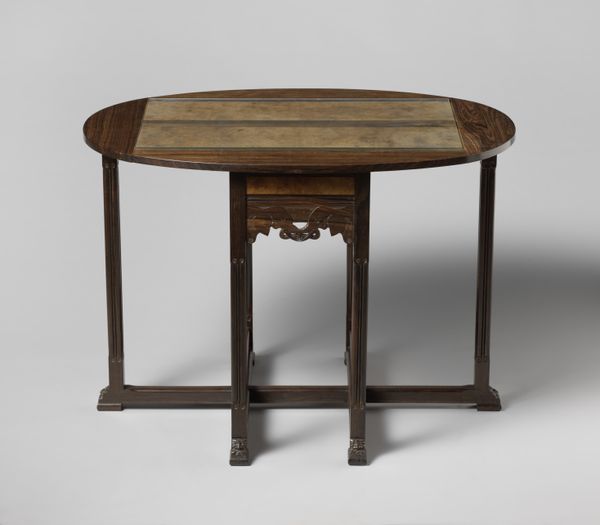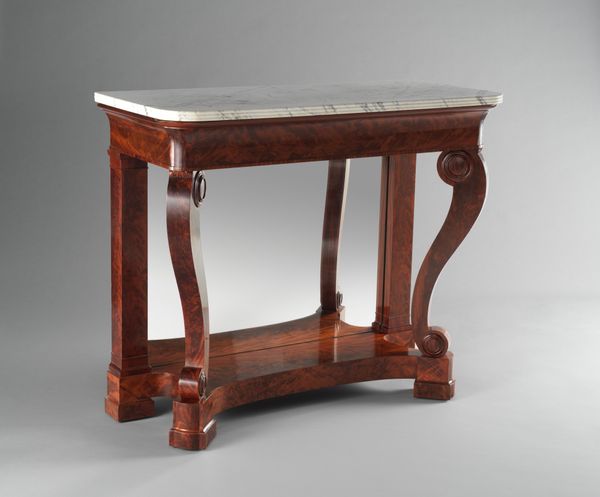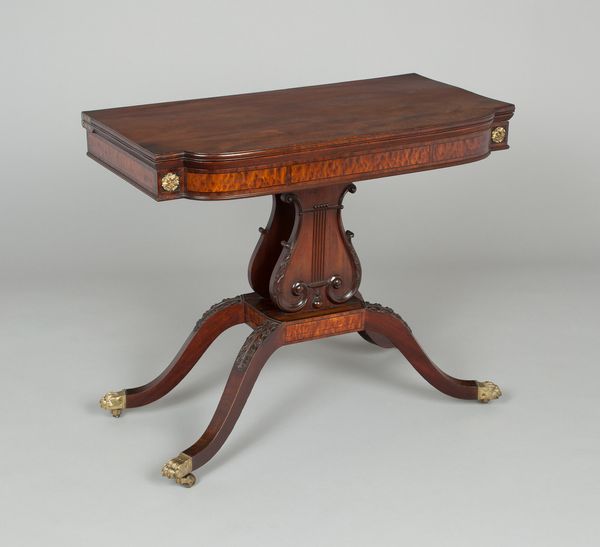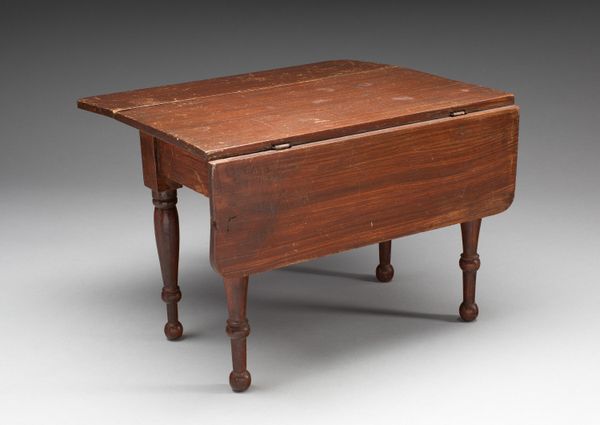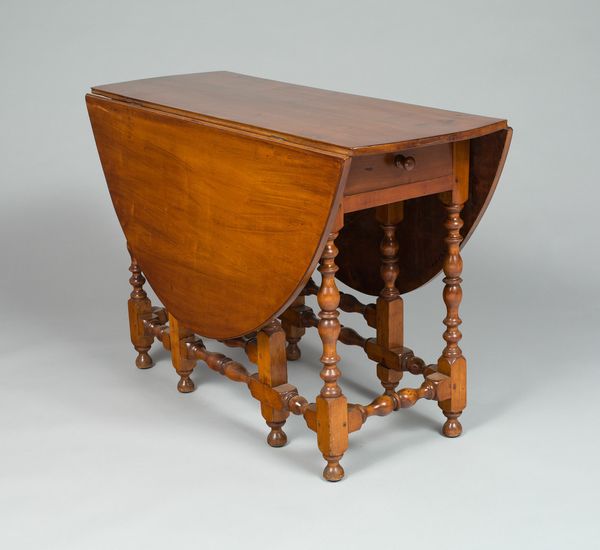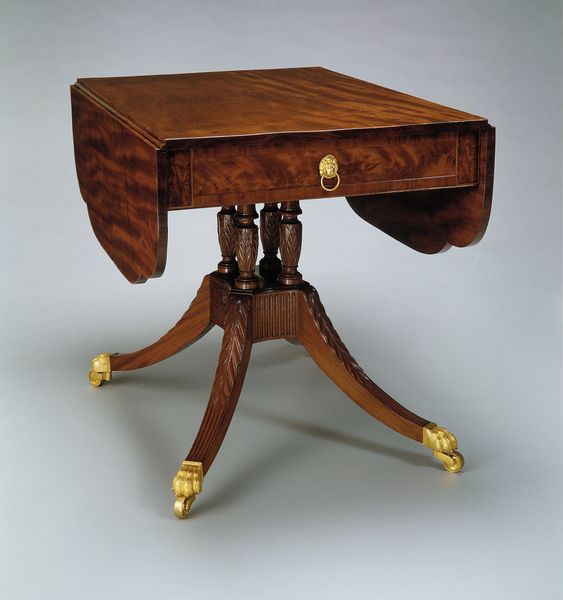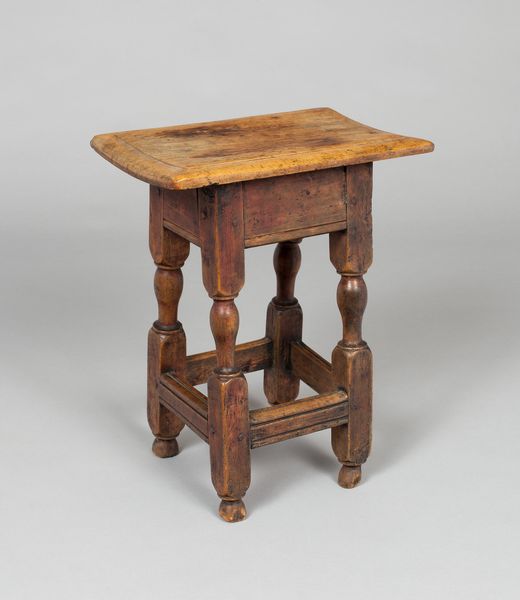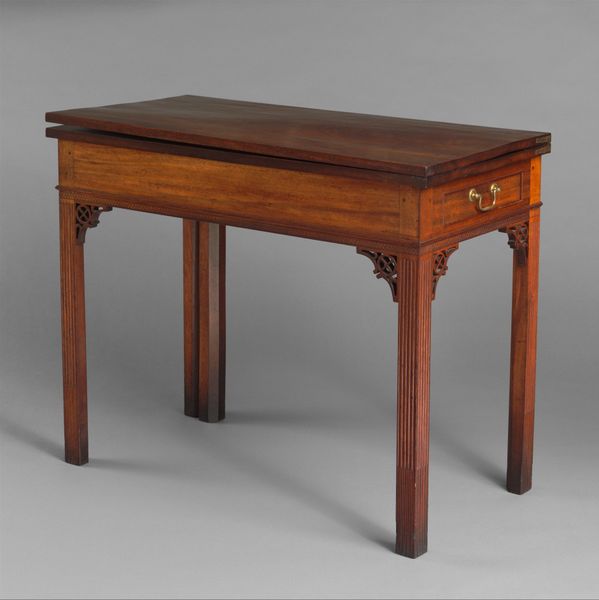
wood, architecture
#
table
#
sculpture
#
furniture
#
wooden texture
#
wood
#
decorative-art
#
architecture
Dimensions: 71.8 × 76.2 × 55.2 cm (28 1/4 × 30 × 22 1/8 in.)
Copyright: Public Domain
Curator: This is the Pembroke Table, created around 1790. It is currently held in the collection of the Art Institute of Chicago. Editor: It’s quite handsome. A lovely brown wooden texture, with graceful curves in the legs and tabletop. Very domestic and refined. Almost makes me want to sit down and write a letter, or plan a quiet revolution over tea. Curator: Precisely! Pembroke tables, characterized by their drop leaves, became popular during the late 18th century, coinciding with an expanding middle class in England eager to emulate aristocratic lifestyles. The table reflects a specific cultural desire for flexible, multipurpose furniture. Editor: Multipurpose... so this table witnessed many sorts of activities then, social and probably deeply private? Thinking about class and access, what would a piece like this communicate, consciously or not? It suggests the rituals and routines of a certain privileged existence, certainly made possible through the exploitation of resources and labor. Curator: Without question. The very acquisition of luxury goods such as this table was intertwined with complex trade networks and colonial exploitation. Ownership served as a performative act. Furthermore, the design speaks to evolving tastes in design—a departure from earlier, heavier baroque styles. Editor: There's also something appealingly modest about its size; it doesn't scream opulence. The subtle details—the shape of the legs, the hardware—hint at understated wealth. What sorts of narratives would have unfolded around such an object? Beyond its utility, this was about asserting and embodying power and identity. Curator: Absolutely. These types of furnishings signaled gentility. Social activities, especially for women of the household, became associated with these refined objects. It's not just about material possession, but the construction and performance of social roles. Editor: It really invites that deeper inquiry. A beautiful object, no doubt, yet embedded within those social dynamics of power, taste, and inequality. Seeing it today challenges us to unpack those histories, not just admire the craftsmanship. Curator: It reminds us that even everyday objects carry significant cultural weight and can reveal much about past societies.
Comments
No comments
Be the first to comment and join the conversation on the ultimate creative platform.
